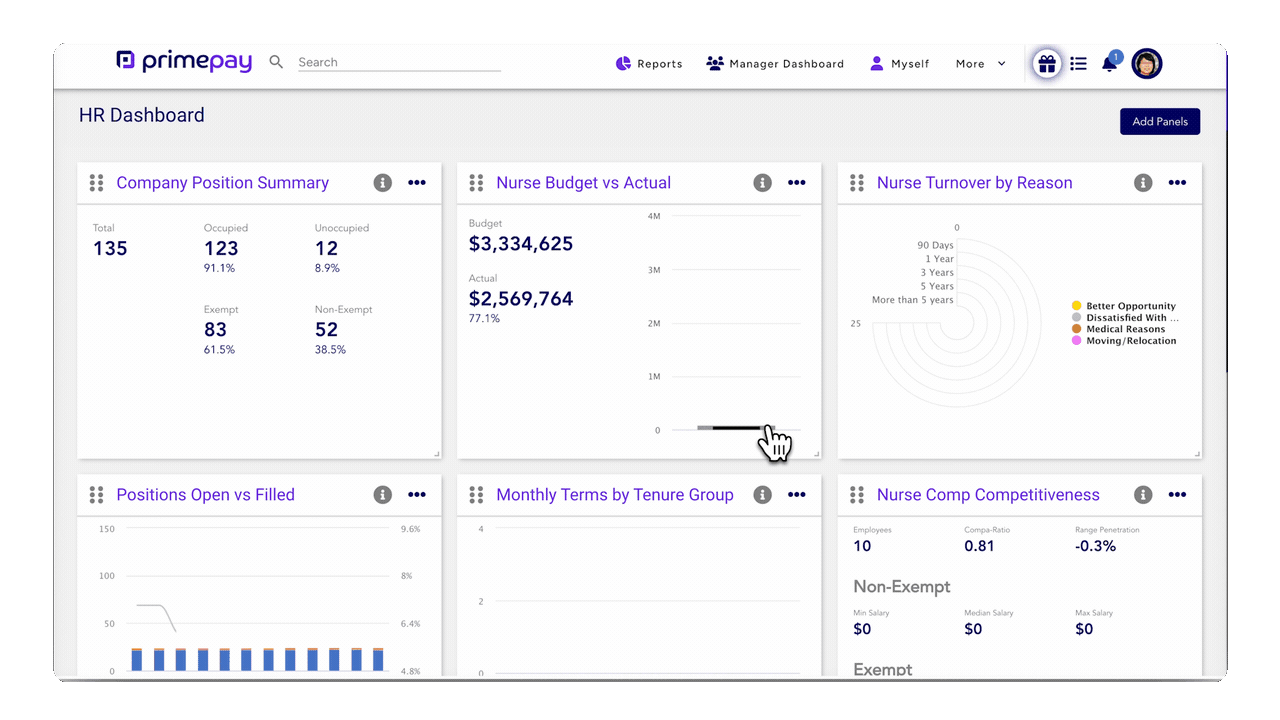Does it ever feel like managing human resources is a never-ending task?
The minute you stabilize one department, you have turnover in another. And the moment you confirm your hiring plan for the next six months, another need pops up that you weren’t aware you needed to plan for.
HR can often feel like a volatile role because most HR systems are set up to be employee-based.
When you hire employees, you create a new profile and capture details about that employee’s role, compensation, and performance. But when that employee receives a promotion or accepts a role with another company, all of that data disappears with them – and you must start over to fill the gap in your system.
HR position management moves the focus away from the employee and towards optimizing your company.
What is Position Management?
Position management stores employee and position data separately and links them together. This allows you to build an internal architecture that will stand the test of time.
Unlike job management, which involves increasing headcount based on the work to be done, position management focuses on creating a preset structure of different roles required to meet business needs, even if no one is available to fill a position.
The Risks of Not Using Position Management
Budgeting by the employee, not the position, can put your organization at risk by impacting financial stability, workforce planning, and overall operational efficiency.
When you focus on planning for specific employees rather than positions, some potential issues are:
- Inconsistencies in salary structures, which lead to pay equity issues, employee dissatisfaction, and possible legal challenges.
- Inaccurate workforce planning, leading to workforce gaps, overstaffing, or misalignment of skills and roles.
- Complicating financial forecasting and budgeting allocations.
- Ad-hoc decision-making, which can undermine the consistency and fairness of the budgeting process.
- Increasing administrative burden by creating inefficiencies, errors in budget management, and increased costs related to administrative overhead.
Position Management Benefits
While the benefits of position management start in the HR team, they don’t end there. They expand to introduce efficiency and productivity into other business-critical areas within your organization.
Here are three benefits that position management systems offer:
1. Simplifies Administrative Tasks and Workforce Planning
The positive impact of a position management system starts with the HR team’s workload.
Most HR teams must manually track and update their reports on unfulfilled and occupied positions, which can change frequently and rapidly. However, teams with access to a position management system can quickly call up accurate reports about these factors in the organization’s past, present, and future. They can see how many open positions are available today and how many will be available in the future – and plan ahead.
With it, HR teams can also automate mundane tasks (like new hire onboarding and terminations), leveraging position attributes to maintain the organization’s structure. Position management can improve your eNPS ratings, as employees receive a more consistent experience across their interactions with the HR department. It can also streamline HR’s approach to repetitive processes.
It’s important to note that maintaining position management involves ensuring data accuracy and consistency. Choose a system that integrates with your HR tech stack to reap significant benefits, like optimizing human capital planning and improving organizational efficiency.
2. Enhances Financial Analysis
Beyond helping HR teams, position management systems also benefit finance leaders by providing a structured and consistent framework for tracking and analyzing workforce-related expenses.
Because position management links costs directly to specific roles rather than individuals, the financial data remains consistent regardless of employee changes. The result? More accurate tracking of labor costs associated with each position and more transparent budget forecasts and cost analysis.
Moreover, the right position management software allows leaders to quickly pull reports comparing the actual budget to the proposed budget across positions and people. Consequently, leaders can analyze detailed breakdowns of labor costs by department, role, or project, giving a clearer picture of the company’s overall financial health, now and in the future.

A modern HCM allows users to track how they’re progressing towards their budget for better planning.
3. Boosts Interdepartmental Collaboration
Position management also connects employees across departments – think HR, finance, recruiters, hiring managers, and even board members. People (with the proper security clearance, of course) can view the company’s organizational structure and position data to make the best decisions for hiring, budgeting, and future planning.
Specifically, position management helps employees across different teams:
- Coordinate hiring processes. Position management ensures that all departments clearly understand the roles and responsibilities associated with each position. This clarity allows HR and hiring managers to work collaboratively to identify each role’s needs and select suitable candidates.
- Accurately allocate budget. By linking costs directly to specific positions, finance teams can collaborate closely with other departments to ensure each team has the necessary resources without overspending.
- Create succession plans. By defining career paths and development opportunities for each position, departments can work together to identify potential leaders and create development plans that align with the organization’s future needs.
- Make data-driven decisions. Sure, it’s an overused phrase, but position management really does help you make data-driven decisions. Departments can analyze workforce data, identify emerging trends, and develop strategies to address them for future planning and organizational resilience.
People get promoted, change roles, and leave the company. Companies hire part-time and seasonal employees. They add and subtract roles depending on projects and the economy. When organizations use position management, that information stays stored in their system (that integrates with their tech stack) until the next time they need it, which saves time and brings greater visibility to the state of the business.
There’s that famous saying that the only thing constant in life is change. How are you preparing your business to react quickly and efficiently to volatility in the workplace?










